Top Stories
_____________________________________________
 Fat Jump Pro (By SID On)Developer: SID On Price: $0.99 Version Reviewed: 1.2 Download: here Requirements: Compatible with iPhone, iPod touch, and iPad.Requires iOS 4.0 or later. Located in the Warsow,Poland-SID on an independent mobile application developer has announced a recent update of Fat Jump Pro for the iPhone,iPad and iPod touch.Fat Jump Pro is a fast paced vertical arcade action for the iOS devices.Using the tilt controls the player must guide the jumping,little green hero (a healthy and crispy cucumber) up a never ending series of platforms... |
|
Latest Stories
______________________________________________
Tuesday, 22 November 2011
Speakers buying guide
Do you like this story?
But if you've recently visited any store, local or online, that sells consumer electronics, you've likely been confronted by rows and rows (or screens and screens) of computer speakers, speaker docks, and the like, in many different sizes and at many different prices. Which do you choose? To help you find the right set—for yourself or your favorite gift recipient—here's the latest edition of our annual speakers buying guide.
What to look for when shopping
As you're browsing the aisles or webpages of your favorite stores, here are some tips to keep in mind.Computer speakers vs. docking speakers: Will your new speakers be used mainly with a computer? If so, any set of standard "computer speakers"—a self-powered system you connect to your computer using a simple analog or digital cable—will work just fine; you just plug in and enjoy.
If, on the other hand, the speakers will be used primarily with an iPhone, iPod, or iPad, you'll want a system that includes a dock cradle featuring Apple's 30-pin dock connector. This connector plugs into the port on the bottom of your device, letting the speaker system grab the highest-quality audio signal while simultaneously charging your portable player. (If a docking speaker system can run off AC or battery power, it likely charges your player only when the speakers are connected to AC power.)
Most recent docking speakers use Apple's Universal Dock design, which means the cradle uses standardized inserts to fit any iPhone or iPod. If a particular system doesn't include the right insert for your player, you'll need to use the insert that came with your iPhone or iPod, or buy the appropriate insert from Apple.
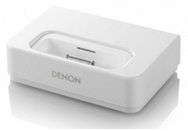
A dock cradle using Apple's Universal design
Planning to use your speakers with both a computer and an iOS device? You can connect any iPod, iPad, or iPhone to a standard set of computer speakers by running an audio cable from the speakers to the i-device's headphone jack or, if you've got one of Apple's charging docks or stands, that accessory's audio-out jack. (The latter provides higher-quality audio.) Conversely, most docking speaker systems also provide a stereo line-in jack for connecting a computer or other audio source while your iPod or iPhone sits in the dock cradle. (There are also adapter cables that let you connect a no-dock-connector audio source to a system with a dock.) Also, consider where the speakers will sit: If you'll be doing a lot of listening at your computer, you'll likely want a system with separate left and right speakers—which usually means computer speakers. Otherwise, any design will do.
(Already have an older iPod-dock speaker system that's not fully compatible with your current iPhone, iPad, or iPod? Check out our article on how to get older speaker docks working with the latest iOS devices.)
iPhone and iPad compatibility: If you'll be using a docking speaker system with an iPhone or a 3G-equipped iPad, I recommend looking for one that sports the Made for iPhone or Made for iPad logo, respectively. Such products were developed according to Apple's specifications, so they're more likely to charge your device properly and less likely to suffer from interference from your iPhone or iPad's wireless circuitry when not in AirPlane mode.
Specs and sound quality: Put simply, you should ignore manufacturers' specifications, especially frequency response numbers. There's no standard testing methodology for speakers, and many vendors exaggerate specs—often laughably so—making them essentially worthless. With very few exceptions, you can't rely on these numbers to tell you anything about a system's audio quality. Instead, use your own ears—try to audition speakers locally before you buy. While a store isn't an ideal environment for testing, it's better than nothing, and it can let you separate the good from the obviously bad.
When testing speakers, bring a variety of your favorite music and take your time. A quality system provides good balance between the treble (upper), midrange, and bass (lower) frequencies, producing full, rich sound while preserving detail. Be especially wary of systems where the treble detail or bass sounds especially prominent—some speakers exaggerate one or both these to stand out in a crowded store display. This is especially common with bass: Speakers that use small drivers—and this includes subwoofers with small-for-subwoofer drivers—simply can’t reproduce the lowest notes, so vendors often tweak speakers to emphasize upper-bass frequencies. This approach adds some punch, but it can also make the speakers sound boomy or thumpy—a trait that becomes fatiguing over time. If deep, controlled bass is important to you, you'll need speakers with relatively large woofers. Otherwise, consider speakers that forgo the lowest frequencies altogether in favor of accurate sound across the rest of the audio spectrum.
If you can't audition a system in person, be sure to read reviews from sources you trust.
Inputs and AirPlay: As mentioned above, most docking speaker systems provide multiple inputs—at least the dock cradle and an audio-input jack. However, some computer speakers offer only a single audio connection, limiting you to listening to sound from your computer. If you'll want to listen to other audio sources, look for a system with additional inputs, preferably within reach for easy access, rather than inconveniently placed on the back of the subwoofer under your desk. Some systems also offer wireless connectivity—usually Bluetooth or AirPlay, and occasionally both (more on these below).

The controls and connections for Creative's GigaWorks T40 Series II are conveniently located on the front of the right-hand speaker.
Price: To some extent, the more you pay for a set of speakers, the better the sound quality or the more features—or both—you get. Fortunately, speakers are among the most heavily discounted computer accessories, so be sure to shop around. Your budget may get you more than you think.
Speaker types and recommendations
In the sections below, I've provided descriptions of each of the major types of stereo (left+right channel) speaker systems on the market. (I don't cover surround-sound systems.) For each type, I've also provided a few recommendations at various prices, indicating the audio-input options (audio jack, iPhone/iPod dock cradle, iPad-compatible dock cradle, Bluetooth, AirPlay, or USB) for each system. Prices listed are MSRP, so you'll likely be able to find each product for a lower price—sometimes substantially lower.Of course, these recommendations are by no means exhaustive—there are quality systems out there that aren't listed. But they should give you an idea of the state of the art in each category.
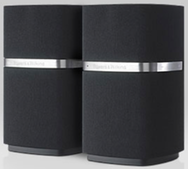
B&W's MM-1
- JBL Duet (audio jack; $40)
- JBL Jembe (audio jack; $60)
- Creative GigaWorks T40 Series II (; audio jack; $150)
- Focal XS Book (audio jack; $400)
- Bowers & Wilkins MM-1 (; audio jack; $500)

Olasonic's TW-S7
- Altec Lansing USB Lite (IML227) (untested; USB; $22)
- Pioneer S-MM301 (USB; $49)
- Olasonic TW-S7 (USB; $100)
- XtremeMac Tango Bar (untested; USB, audio jack; $100)
- UFi UCube (USB; $150)
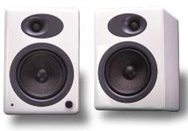
Audioengine's A5
- Audioengine 2 (exceptionally small; audio jack; $199)
- M-Audio Studiophile AV 40 (audio jack; $230)
- Audioengine 5 and 5+ (audio jack; $349 to $469)
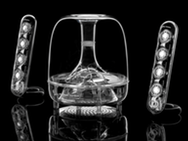
Harman Kardon's SoundSticks III
- JBL Creature III (audio jack; $80)
- Energy Power EM-2.1 Multimedia System (audio jack; $100)
- Logitech Speaker System Z523 (audio jack; $150)
- Klipsch ProMedia 2.1 (audio jack; $150)
- Harman Kardon SoundSticks II (; audio jack; $170) and SoundSticks III (audio jack; $210)

Aliph's Jawbone Jambox
- Altec Lansing Orbit MP3 (IM227) (audio jack; $30)
- Portable Sound Laboratories iMainGo 2 (; player compartment, audio jack; $40)
- Nuforce Podio PS-106 (audio jack; $59)
- Portable Sound Laboratories iMainGo X (player compartment, audio jack; $70)
- Altec Lansing InMotion Compact (IMT320) (; dock, audio jack; $80)
- iHome iD9 (iPad dock, audio jack; $100)
- Altec Lansing inMotion Classic (; dock, audio jack; $130)
- Logitech Rechargeable Speaker S715i (dock, audio jack; $150)
- foxL v2 (audio jack; $169)
- Aliph Jawbone Jambox (; audio jack, Bluetooth; $199)
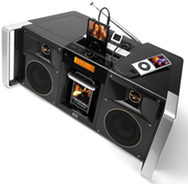
Altec Lansing's Mix iMT800
- Harman Kardon Go + Play Micro (; dock, audio jack; $299)
- Altec Lansing Mix Boombox iMT810 (dock, audio jack; $300)
- Philips Fidelio DS8550 (iPad dock, Bluetooth, audio jack; $300)
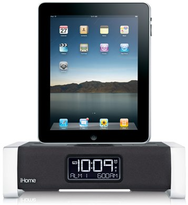
iHome's iA100
- Cambridge SoundWorks i525 (; alarm clock; dock, audio jack; $150)
- Klipsch iGroove SXT (dock, audio jack; $170)
- iHome iA100 (; alarm clock; iPad dock, Bluetooth, audio jack; $200)
- Boston Acoustics Duo-i Plus (; alarm clock; dock, audio jack; $250)
- Bowers & Wilkins Zeppelin Mini (dock, audio jack; $300)
- Geneva Lab Sound System Model S (; dock, audio jack; $300)
- Bowers & Wilkins Zeppelin Air (; AirPlay, dock, audio jack; $600)

Boston Acoustics' i-DS3 Plus
- Boston Acoustics i-DS3 Plus (actually a desktop system plus a subwoofer; dock, audio jack; $500)
- Focal XS 2.1 (; dock, audio jack; $599)
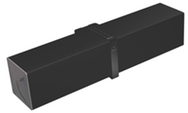
Creative's ZiiSound D5
- Logitech Wireless Speaker Z515 (portable; Bluetooth, audio jack; $100)
- foxL v2 Bluetooth (portable; Bluetooth, audio jack; $199)
- Aliph Jawbone Jambox (; portable; Bluetooth, audio jack; $199)
- iHome iA100 (; desktop; iPad dock, Bluetooth, audio jack; $200)
- Altec Lansing inMotion Air (IMW725) (; portable; Bluetooth, audio jack; $200)
- Philips Fidelio DS8550 (transportable; iPad dock, Bluetooth, audio jack; $300)
- Creative ZiiSound D5 Wireless Bluetooth Speakers (desktop; Bluetooth, audio jack; $300)
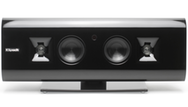
Klipsch's Gallery G-17 Air
- Altec Lansing inAir 5000 (AirPlay, audio jack; price TBD)
- Audyssey Lower East Side Audio Dock Air(AirPlay, audio jack; $400).
- Klipsch Gallery G-17 Air (AirPlay, audio jack; $550)
- Bowers & Wilkins Zeppelin Air (; AirPlay, dock, audio jack; $600)
Build your own?
As an alternative to buying a speaker system, you can build your own system for your computer, your iPhone or iPad, or even for AirPlay listening. A few years ago, I wrote about building an iPod/iPhone speaker system from a small amp, a dedicated iPod dock, and a set of quality bookshelf speakers. More recently, I wrote about building your own AirPlay-enabled audio system. Stay tuned for an upcoming review roundup of desktop amplifiers, as well as a roundup of desktop amps with built-in digital-to-analog converters for getting quality audio from your computer.via : Macworld

This post was written by: Irfan Jam
Irfan Jam is a professional blogger, web designer and front end web developer. Follow him on Facebook














0 Responses to “Speakers buying guide”
Post a Comment